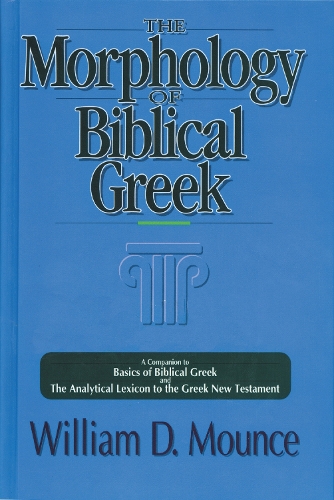
The Morphology of Biblical Greek: A Companion to Basics of Biblical Greek and The Analytical Lexicon to the Greek New Testament
(Paperback)
Publishing Details
The Morphology of Biblical Greek: A Companion to Basics of Biblical Greek and The Analytical Lexicon to the Greek New Testament
By (Author) William D. Mounce
Zondervan
Zondervan Academic
1st December 1994
United States
Classifications
Professional and Scholarly
Non Fiction
Criticism and exegesis of sacred texts
Grammar, syntax and morphology
Historical and comparative linguistics
487.4
Physical Properties
Paperback
388
Width 152mm, Height 229mm, Spine 25mm
416g
Description
The Morphology of Biblical Greek explains, in a way second-year Greek students can understand, how Greek words are formed.It shows that Greek word formation follows a limited set of rules.Once these rules are understood, it becomes clear that forms which once seemed to be irregular or an exception actually follow these morphological rules.The Morphology of Biblical Greek has five parts:1.The rules that determine how Greek words change.2. The rules of verb formation, from augment to personal ending.3. Paradigms for every type of noun and adjective form, with all the words that belong in each category and any peculiarities of a given word.4. All the verbs and principal parts, with verbs that follow the same rules grouped together.5. An index of all words in the New Testament with their morphological category.The Morphology of Biblical Greek contains the most complete set of paradigms for nouns, verbs, adjectives, and pronouns available for New Testament Greek.
Author Bio
William D. Mounce (PhD, Aberdeen University) lives as a writer in Spokane, Washington. He is the president of Biblical Training, a non-profit organization offering the finest in evangelical teaching to the world for free. See BillMounce.com for more information. Formerly he was the preaching pastor at a church in Spokane, and prior to that a professor of New Testament and director of the Greek program at Gordon-Conwell Theological Seminary. He is the author of the bestselling New Testament Greek resources, Basics of Biblical Greek, and served as the New Testament chair of the English Standard Version translation of the Bible.
